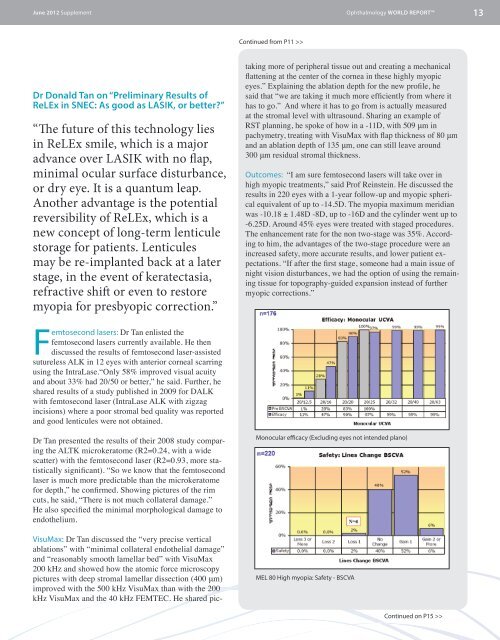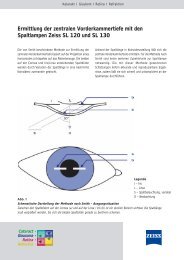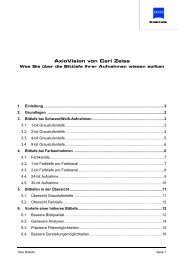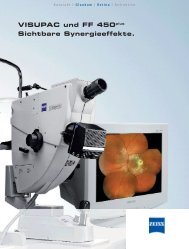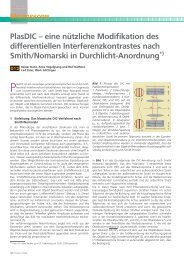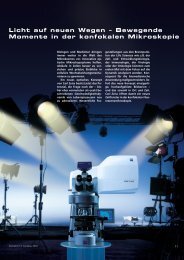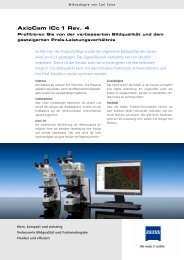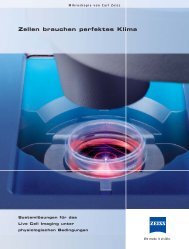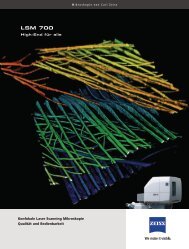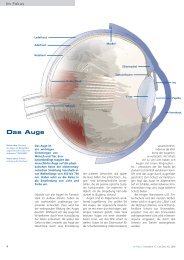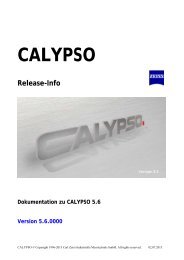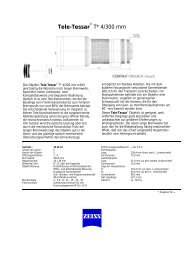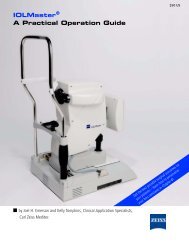FEMTO-LASIK and BEYOND - Carl Zeiss, Inc.
FEMTO-LASIK and BEYOND - Carl Zeiss, Inc.
FEMTO-LASIK and BEYOND - Carl Zeiss, Inc.
You also want an ePaper? Increase the reach of your titles
YUMPU automatically turns print PDFs into web optimized ePapers that Google loves.
June 2012 Supplement<br />
Ophthalmology WORLD REPORT<br />
13<br />
Continued from P11 >><br />
Dr Donald Tan on “Preliminary Results of<br />
ReLEx in SNEC: As good as <strong>LASIK</strong>, or better?”<br />
“The future of this technology lies<br />
in ReLEx smile, which is a major<br />
advance over <strong>LASIK</strong> with no flap,<br />
minimal ocular surface disturbance,<br />
or dry eye. It is a quantum leap.<br />
Another advantage is the potential<br />
reversibility of ReLEx, which is a<br />
new concept of long-term lenticule<br />
storage for patients. Lenticules<br />
may be re-implanted back at a later<br />
stage, in the event of keratectasia,<br />
refractive shift or even to restore<br />
myopia for presbyopic correction.”<br />
taking more of peripheral tissue out <strong>and</strong> creating a mechanical<br />
flattening at the center of the cornea in these highly myopic<br />
eyes.” Explaining the ablation depth for the new profile, he<br />
said that “we are taking it much more efficiently from where it<br />
has to go.” And where it has to go from is actually measured<br />
at the stromal level with ultrasound. Sharing an example of<br />
RST planning, he spoke of how in a -11D, with 509 μm in<br />
pachymetry, treating with VisuMax with flap thickness of 80 μm<br />
<strong>and</strong> an ablation depth of 135 μm, one can still leave around<br />
300 μm residual stromal thickness.<br />
Outcomes: “I am sure femtosecond lasers will take over in<br />
high myopic treatments,” said Prof Reinstein. He discussed the<br />
results in 220 eyes with a 1-year follow-up <strong>and</strong> myopic spherical<br />
equivalent of up to -14.5D. The myopia maximum meridian<br />
was -10.18 ± 1.48D -8D, up to -16D <strong>and</strong> the cylinder went up to<br />
-6.25D. Around 45% eyes were treated with staged procedures.<br />
The enhancement rate for the non two-stage was 35%. According<br />
to him, the advantages of the two-stage procedure were an<br />
increased safety, more accurate results, <strong>and</strong> lower patient expectations.<br />
“If after the first stage, someone had a main issue of<br />
night vision disturbances, we had the option of using the remaining<br />
tissue for topography-guided expansion instead of further<br />
myopic corrections.”<br />
Femtosecond lasers: Dr Tan enlisted the<br />
femtosecond lasers currently available. He then<br />
discussed the results of femtosecond laser-assisted<br />
sutureless ALK in 12 eyes with anterior corneal scarring<br />
using the IntraLase.“Only 58% improved visual acuity<br />
<strong>and</strong> about 33% had 20/50 or better,” he said. Further, he<br />
shared results of a study published in 2009 for DALK<br />
with femtosecond laser (IntraLase ALK with zigzag<br />
incisions) where a poor stromal bed quality was reported<br />
<strong>and</strong> good lenticules were not obtained.<br />
Dr Tan presented the results of their 2008 study comparing<br />
the ALTK microkeratome (R2=0.24, with a wide<br />
scatter) with the femtosecond laser (R2=0.93, more statistically<br />
significant). “So we know that the femtosecond<br />
laser is much more predictable than the microkeratome<br />
for depth,” he confirmed. Showing pictures of the rim<br />
cuts, he said, “There is not much collateral damage.”<br />
He also specified the minimal morphological damage to<br />
endothelium.<br />
VisuMax: Dr Tan discussed the “very precise vertical<br />
ablations” with “minimal collateral endothelial damage”<br />
<strong>and</strong> “reasonably smooth lamellar bed” with VisuMax<br />
200 kHz <strong>and</strong> showed how the atomic force microscopy<br />
pictures with deep stromal lamellar dissection (400 μm)<br />
improved with the 500 kHz VisuMax than with the 200<br />
kHz VisuMax <strong>and</strong> the 40 kHz FEMTEC. He shared pic-<br />
Monocular efficacy (Excluding eyes not intended plano)<br />
MEL 80 High myopia: Safety - BSCVA<br />
Continued on P15 >>


